Best TV 2020: 10 big-screen TVs worth buying this year
April is a surprisingly good month to start shopping for the best TV of the year. That's because, at this point, all of last year's models have been reviewed, and new models are just starting to hit store shelves this month.
While it will still be another few weeks before we can properly review them, we've already gotten to see some killer screens at CES like the new Samsung Q950TS, LG CX OLED , TCL 6-Series with Mini-LED and upcoming Vizio OLED - each of which stands a very good chance of making this list... after we put them through their paces of course.
If you can't wait a few more weeks for us to get through those reviews, however, there are plenty of amazing TVs from 2019 that are still well-worth buying, many of which are actually on sale now that new models are making their way into stores.
Below you'll find a list of 10 TVs total from this year and last year, with some budget models from Vizio, TCL and Hisense that offer great performance at a really good price and high-end options like QLED TVs from Samsung and OLEDs from LG.
Best TV at a glance:
- Samsung Q90R QLED TV
- LG C9 OLED Series
- Vizio P-Series Quantum X
- Samsung Q950R QLED TV
- Sony A9G Master Series OLED
- LG B9 OLED Series
- Samsung Q70R QLED TV
- TCL 6-Series QLED (R625)
- Hisense H9F Series
- Sony Bravia X950G Series
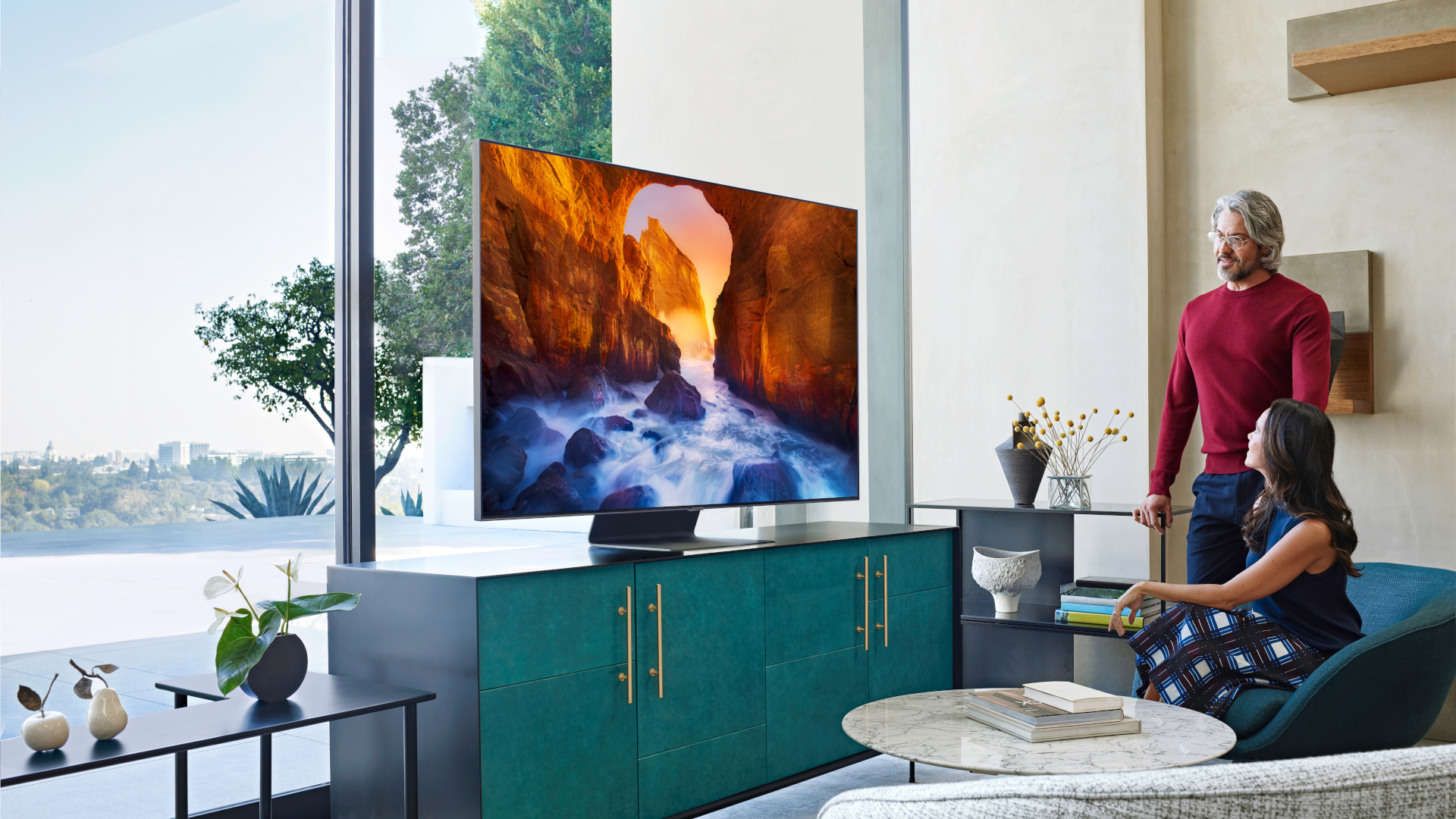
Image credit: Samsung
Last year, the Samsung Q9FN was the TV to beat. It won plaudits galore for its features and image quality, not to mention its excellent, improved smart platform that came with Bixby support and Samsung SmartThings.
However it wasn’t perfect and there were legitimate complaints about viewing angles and an over-aggressive local dimming system that crushed detail just above black.
Samsung has clearly taken these criticisms to heart, and directly addressed them in the Q90. The new model has a visibly superior viewing angle that holds its own against an OLED TV, and the local dimming delivers deep blacks without losing shadow detail. To that end, the new Ultra Black Elite filter is nothing short of a revelation, rejecting ambient light in a way that just staggers belief.
The Q90 is able to deliver images that can directly compete with an OLED, with natural colors, bright highlights, deep blacks, and well defined shadows. It can also surpass any OLED when it comes to HDR, with images that are often breathtaking in their detail and dynamic range.
In fact our only real criticism would be that, unlike some of the competition, the Q90 doesn’t support Dolby Vision. However in all other respects the Samsung Q90 is an absolutely stellar new Samsung TV that takes QLED to another level.
Read the full review: Samsung Q90R QLED TV

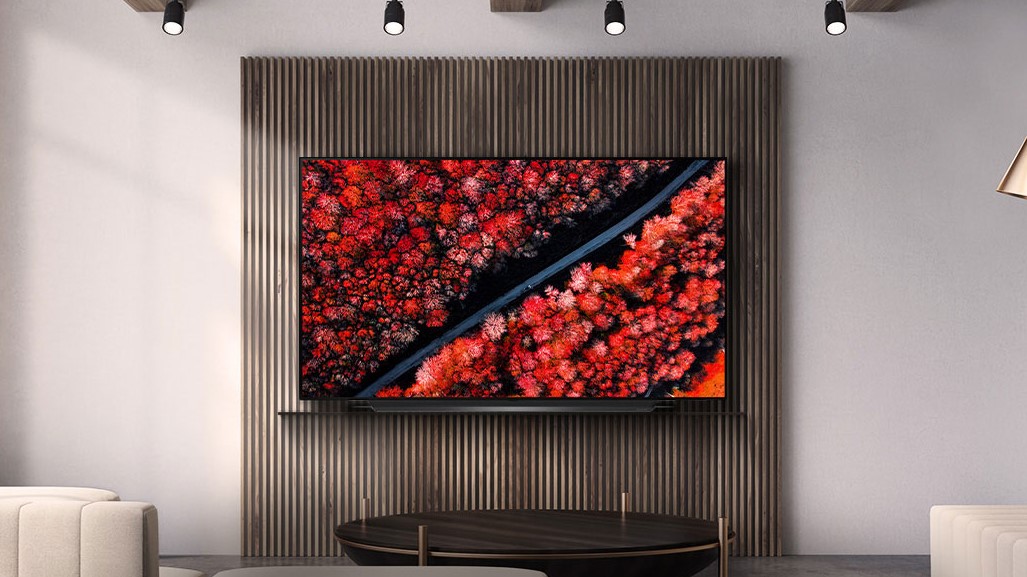
LG C9 OLED Series (2019)
The LG C9 is a truly exceptional 4K OLED TV that takes what was so impressive about last year’s C8 OLED and builds on it. The major difference is the inclusion of the 2nd generation Alpha9 processor, which uses AI enhancements to deliver stellar SDR and HDR images, and helps make the upscaling and processing second-to-none with incredible levels of detail and image fidelity.
As is the case with all OLED TVs the panel brightness pales when compared to an LCD TV, but brightness isn’t everything. The absolute blacks and pixel level of precision afforded by the self-emissive technology ensures that HDR looks stunning. There’s support for Dolby Vision as well, and only the absence of HDR10+ disappoints.
There are other OLEDs worth considering this year (see: LG's own E9 Series) but we think the OLED C9 offers the best price-to-performance ratio of any TV under the sun – true in 2019, and still true in 2020.
Read the full review: LG C9 OLED (OLED55C9, OLED65C9, OLED77C9)


The Vizio P-Series Quantum X is a home run for Vizio. Sure, the SmartCast interface isn’t all the great, and the speakers are worth bypassing, but the TV is packed with awesome features and backed up by an excellent image quality. We’re looking forward to AirPlay 2 and HomeKit support, but even without those features the TV is still one of the best options in its price range.
If you truly have deep pockets and want the best image quality out there, then it’s still worth going for LG's OLED or Samsung's QLED TVs - but in the absence of a six-figure salary, the $2,199 Vizio P-Series Quantum X PX-65G1 is clearly an excellent option for those that want quantum dot tech in a smart TV at Vizio-level prices.
Read the full review: Vizio P-Series Quantum (PQ65-F1)


Samsung Q900TS QLED TV
The Samsung Q950TS represents the latest 8K TV from the manufacturer, combining all the benefits of last year’s Samsung Q900 8K screen with innovations first introduced the 2019 flagship Samsung Q90 4K TV that hit shelves earlier this year.
Combined in one top-notch QLED TV, the new Samsung Q950 offers an 8K panel and AI-enhanced image processing, plus wider viewing angles, an improved black filter and standard-setting HDR performance. If all that wasn’t enough, Samsung’s smart TV platform is the most comprehensive on the market.
So if you’re looking for a state-of-the-art new Samsung TV – and don't mind paying top-dollar for it – the Q950TS should be at the top of your short list.
Read the full review: Samsung Q950TS 8K QLED

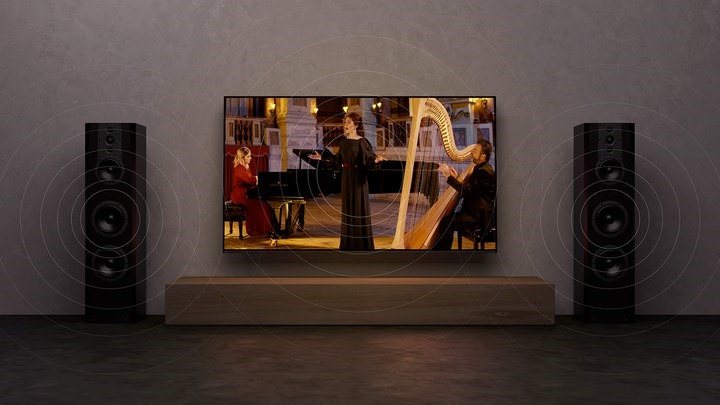
Sony Bravia A9G OLED (2019)
A direct replacement for last year's Sony A9F/AF9 OLED, the Sony A9G/AG9 Master Series OLED is the new flagship of Sony’s TV fleet. It embraces a characteristically minimalist design that disguises a host of cutting-edge features like Dolby Vision and Dolby Atmos support, plus Netflix Calibrated Mode (of interest to many), and IMAX Enhanced certification (of interest to few).
This is a screen that looks premium, and has a spec on the right side of righteous. The Android platform is easy to live with, that vibrating sound system entertaining and picture quality top notch. Offering Dolby Vision is a welcome refinement, but the caveat is a lack of support for HDR10+. That said, it does a fabulous job up-scaling HD/SDR so it's easy to overlook the lack of at least one HDR format.
It's undoubtedly expensive but, all things considered, this glass is class.
Read the full review: Sony A9G Master Series OLED


LG B9 OLED Series (2019)
The LG B9 OLED absolutely delivers on its promise – to give shoppers a cheaper way into a world of OLED, with the sharp contrast and vivid colors that involves.
Inevitably there are some corners cut to get there, and you’re not getting the excellent experience of the C9 or E9 – while the delayed launch of the budget B9 model, and continuing price cuts to more premium sets, means this year’s B Series isn’t quite the deal it would have been a few months ago.
If the B9 is all your budget allows for, it’s a solid purchase, though scrimping and saving for the LG C9 OLED – and keeping an eye out for it in the Black Friday and Cyber Monday sales – may be a better decision in the long run.


Samsung Q70R QLED TV (2019)
Samsung’s flagship Q90R QLED TV blew us away recently with its wider viewing angles, deeper blacks, and superior HDR images - sadly, however, not everyone can afford the flagship model. So what can Samsung offer for those wanting to experience QLED picture quality on a budget?
Despite sitting lower down in the QLED line-up, the Q70R includes the same comprehensive smart platform, extensive connections, and cutting-edge features found further up the range. This isn’t the flashiest-looking TV that Samsung has ever made, but if your funds are limited the Q70 is a cracking QLED all-rounder that’s worth checking out.
Read the full review: Samsung Q70R QLED TV

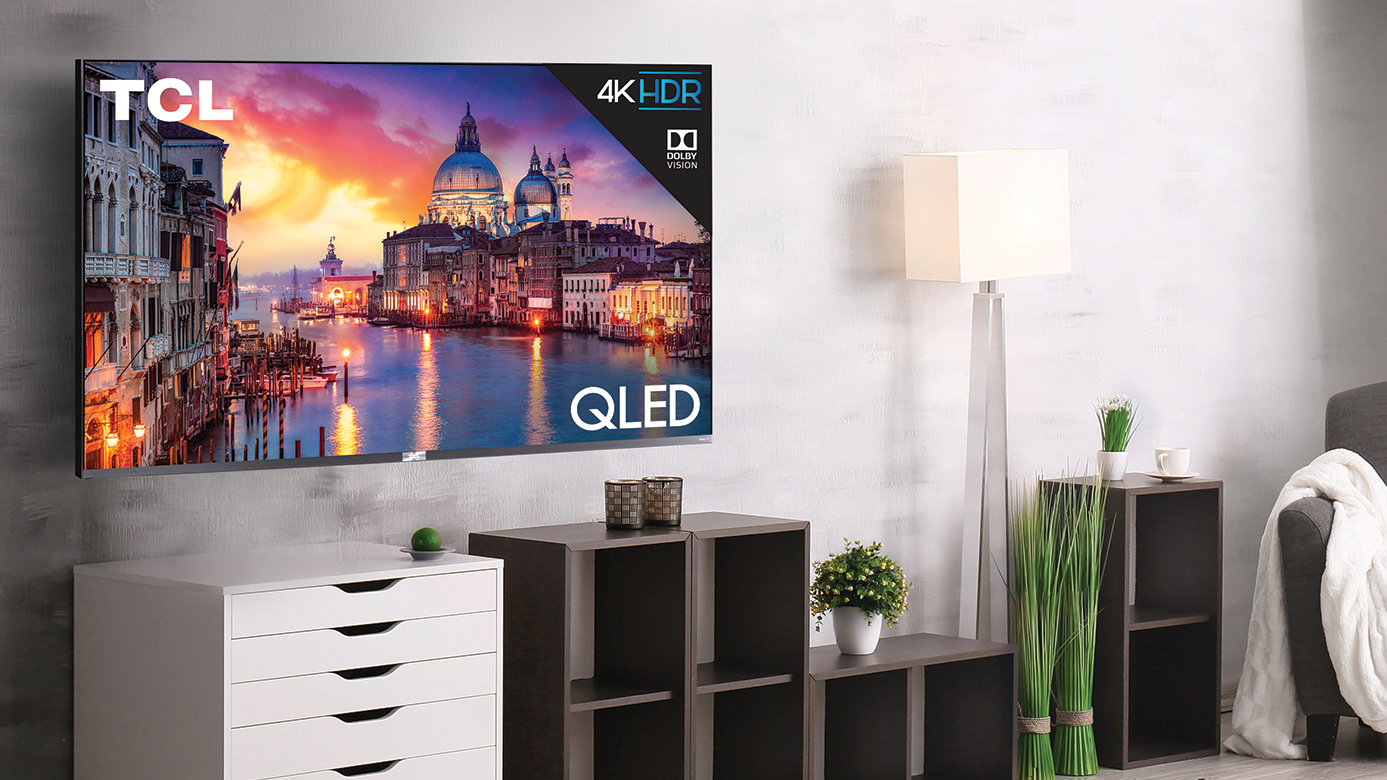
TCL 6-Series (R625) (2019)
Few TVs have changed the home entertainment space in the same way that the TCL 6-Series has - it’s made high-end features like Dolby Vision support, full-array panels and Wide Color Gamut available to consumers at a third of the cost of high-end TVs. This year's addition to the storied series, the TCL 6-Series QLED (2019), adds a Quantum Dot filter that makes colors more vibrant and contrast even more extreme and the new AIPQ upscaling engine that better converts HD video to 4K resolution.
It's still not as good as the leading TVs from Samsung, LG and Sony in the upscaling department and has some motion issues due to the underlying 60Hz panel, but at just $599 we can easily overlook these issues. To that end, it’s absolutely fair to say that the TCL 6-Series is the best TV you can possibly get in this price range.
Read the full review: TCL 6-Series QLED (R625)


Hisense H9F (55H9F, 65H9F) (2019)
The latest model in Hisense’s ULED line is the Hisense H9F, and on paper, it has a lot going for it: With up to 132 local dimming zones, a modern design, and Android TV built right into it, this could be the TV to beat for under $1,000.
When it comes to raw picture quality, the Hisense H9F is simply the best TV in this price range. At $600, the TV offers a stellar image quality, with beautifully deep black-levels and crisp colors - all in a manageable 55-inch package.
Sure, the audio leaves a lot to be desired, and you may or may not like Android TV, but you can always buy a Roku streaming stick or Apple TV, and use the TV with a stereo surround system or other speakers - leaving the Hisense H9F to do what it’s best at: display a great image.
Read the full review: Hisense H9F (55H9F)


Sony Bravia X950G Series (2019)
OK, so you don't want (or can't afford) Sony's new A9G OLED or the fantastic-but-pricey Z9G. So what should you buy? Check out the X950G series. With superb 4K image clarity, powerful SDR-to-HDR remastering, and a smooth direct LED backlight, Sony is offering something very different with the X950G.
Right out of the box, the best way to describe the image quality of the X950G is… well, natural. It’s not flashy. It’s not overly bright. Colors aren’t oversaturated. It’s just a really natural picture with subdued colors and great black levels perfect for HD/SDR content. That said, if you’re the kind of person that wants a bit more pop to your images all you need to do is turn on Live Color in the picture settings. This mode works on HD/SDR content to add a bit more color saturation to the image and helps to make the image ‘pop’ in a way that really grabs your attention.
It’s a shame that poor sound quality ruined such a great 4K/HDR TV, however, taken by itself, the Sony X950G is an immaculate screen with a ton of potential.
Read the full review: Sony BRAVIA X950G (XBR-65X950G)
Continue on to page two to read about what to look for when buying a TV!
- Editor's note: While every TV on our list offers both a 4K resolution and High Dynamic Range (HDR) support, we also have a list specifically tailored to those features in the form of our best 4K TV list.
- Want better audio? Check out our guide to the best soundbars available.
- Once you've decided on a panel, make sure you read our guide on how to set up your TV to make sure you're getting the most out of it.
- Are you looking for the best universal remote for your new home theater setup?
- Need something to watch on your new TV? check out our list of best TV streaming services.
What TV technology is best? Which is the best LCD TV? Which screen size is best for your living room? What's the difference between LCD and LED TVs?
The answers aren't always obvious. In fact, buying a new TV can be stressful even for the tech-savvy - there are so many brands, so many features, so many screen sizes, colors, technologies and flavors to choose from.
So which one is right for you, your family and your living space? In this guide, we'll walk you through everything you need to know about buying a new TV.
What types of TV are there out there?
There are a lot of different screen types out there, all working in different ways to produce the same results. Each technology has its own unique strengths and weaknesses so here are some basics to consider:
LCD TV: CCFL
A few years back, all LCD TVs were backlit by always-on, CCFL (cold cathode fluorescent) lamps. This ageing technology has been superseded by the superior LED method on more expensive sets, but is still standard on some cheaper models.
LED TV: Direct LED
These displays are backlit by an array of LEDs (light emitting diodes) directly behind the screen. This enables localised dimming – meaning immediately adjacent areas of brightness and darkness can be displayed more effectively – and greatly improves contrast. LED TVs are also more power efficient and capable of a wider colour gamut than CCFL sets. Because of the extreme cost of mounting these arrays of LEDs, cheaper TVs usually use Edge-Lit LED screens over Direct or Full-Array LED screens.
LED TV: Edge LED
With these TVs, LEDs of the backlight are mounted along the edges of the panel. This arrangement enables radically slender displays and offers superior contrast levels to CCFL, but can't achieve the same picture quality as directly lit LED sets. However, they do come in far cheaper which is why most LED TVs out there now use this technology.
OLED TV
The backlighting on OLED (organic light emitting diode) sets is achieved by passing an electric current through an emissive, electroluminescent film. This technique produces far better colours and higher contrast and also enables screens to be extremely thin and flexible. This is the holy grail display technology and LG, Sony, Philips and Panasonic have all adopted it in their flagship sets.

Quantum Dot
Quantum Dot is Samsung's big play in the LED TV space. With it, the brand claims that it's able to produce more colorful pictures than LG and Sony while offering even brighter panels. LG's Super UHD TVs all use a variation of Quantum Dot called Nano Cell, and Hisense makes a number of Quantum Dot TVs for the US and China.
Plasma TV
Plasma has almost entirely been phased out at this point, but PDP (plasma display panel) TVs use glass panels containing millions of tiny cells filled with a mixture of inert gases. Electricity excites the gases, causing them to illuminate the pixels across the screen. Plasma, while arguably superior to LCD in terms of contrast and colour accuracy, is only viable on large (42in+) screens and has been dropped by all but a handful of manufacturers. You'll be lucky to find one on the shelves these days.
Curved TV
Some manufacturers are now making TVs that have slightly curved screens. But unlike old CRT TVs, the curve is inwards rather than outwards. The idea is that this makes every pixel equidistant from your eyes, delivering a more satisfying picture. However, there are drawbacks for this type of screen - the main one being that if you sit far enough to one side – more than 40 degrees or so – the curve clearly starts to affect the image's geometry, foreshortening content near to you and compressing the image's centre.
What resolution tech should I go for?
HD
HD TVs come in two resolutions. Sets with the HD ready are required to be able to display a minimum 720p picture, and generally has a screen resolution of 1366 x 768 pixels. Meanwhile, Full HD TVs have a higher resolution of 1920 x 1080 pixels. It's highly advisable that you don't go for anything less than full HD in this day and age, and really you should be looking almost exclusively at 4K sets.
Ultra HD and 4K
The resolution of Ultra HD is exactly four times higher than full HD - 3840 x 2160. It means a far more detailed picture, with content requiring a lot more bandwidth and storage space. 4K TVs tend to be good at upscaling HD video to Ultra HD but there are currently a few options for watching native 4K content, but terrestrial broadcasters in the US have yet to adopt it as the new standard. Read more about 4K.
HDR
The next big thing in TVs, HDR produces astounding levels of visual fidelity and can be found in some of the latest Ultra HD TVs. HDR is a technology and a standard. Content needs to be mastered in HDR and you need an HDR TV to see it. What HDR offers however, is worth the extra steps to get it - you'll see increased contrast and more realistic colors, enhancing the image to a more cinematic level.
What else should I consider?
Buying a flatscreen television is a major investment and one that you can't afford to take lightly. Just popping into the closest store and grabbing the first plasma or LCD you see won't get you the best deal, the screen that suits your needs, or the gear you require to make the most of your new purchase.
Size matters
People tend to pick the size of their flat TV based on the amount of space they have for it, this isn't necessarily wise. Flat TVs take up much less space than you might think, so your new TV may end up a foot or two further away from your viewing position, making the picture appear smaller.
Also, with hi-def, you can have a bigger screen and the same viewing distance without worrying about seeing blemishes inherent to the source. A 4K TV's lack of noise means that the ideal distance to sit from the screen is three to four times the height of the TV.
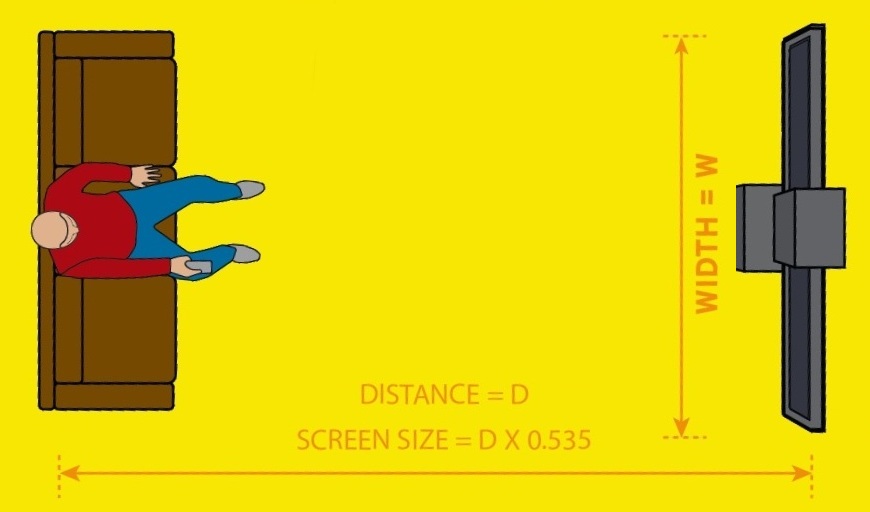
How to calculate the right size HD TV:
The trick here is to ensure that your TV is big enough to fill your line of vision, but small enough to be sharp and clear. Remember, if you intend to only watch standard-definition sources, the bigger the screen gets, the worse the image will look.
The ideal screen size can be calculated by multiplying the distance that you intend to sit away from it by 0.535 and then rounding this up to the nearest size.
So, if you sit 80in away from your TV, the ideal size is 42-inch (80 x 0.535= 42.8).
What features should I look out for?
Features are too numerous to go into here, but here are some things you should consider.
Photo viewing: If you have a digital camera, a TV that has a slot for memory cards or a USB socket for a card reader will let you view your photos onscreen.
Here are some of the things we look for when we review a screen, so you should, too...
Contrast: Bright whites shouldn't have any signs of green, pink or blue in them, while blacks should look solid and not washed out, grey, green or blue.
Colours: Look at how bright and solid they are; how noiseless their edges are; how 'dotty' richly saturated areas are and how natural skin looks, especially in dim scenes.
Fine detail: How much texture does the screen give? Does a tree look like a green lump, or can you see the individual leaves
Edges: Check for ghosting, bright halos and jaggedness, especially around curves.
Motion: Check moving objects and quick camera pans for smearing or blurring, trailing, jerkiness and fizzing dotty noise.
Image artefacts: Look for blockiness, colour bands, grain, smearing, dot crawl: anything that looks like it's added by the TV picture processing or a weak TV tuner. Tinker with a TV's picture settings before making a final decision. Factory settings are rarely good for everyday viewing.

What about sound?
To provide the best audio to complement the pictures, your TV should be hooked up to a surround sound system, but this isn't always an option. So, here's what we listen for when testing a TV's speakers:
Bass: Deep, rounded rumbles that don't cause the set to rattle or speakers to distort, cramp or overwhelm the rest of the sound; but that expand when needed.
Vocals: Voices should sound open, rich and clear, not boxed in, nasal or thin.
Trebles: Treble effects should sound clean, rounded and smooth in loud scenes and shouldn't dominate the soundstage.
Soundstage width/depth: A good TV should throw the sound away from the TV, to the sides, forward and back, to give an extra dimension to what's on screen, without losing any coherence.
How many HDMI sockets do I need?
For a living room TV you should be looking for a minimum of 3 HDMI inputs. If you want to attach a set-top box as well as games consoles etc, those HDMI ports will fill up fast.
Do I want to hang my TV on the wall?
First off, you'll need to consult a construction expert to check that the wall in question is strong enough to support a flatscreen. Then find out if the set you want is designed to be wall-mounted and, if so, ask if the relevant bracket is included in the basic package or as an optional extra.
Will I be connecting it to a home cinema?
If the answer is no, you might want to think more carefully about your set's audio performance. Look for a screen that can go as loud as you'll need without distortion or cabinet rattle. Consider how dialogue sounds and how much low-end rumble the bass is capable of.
Conversely, it's pointless paying out more cash for exceptional built-in speakers if you already have a decent home cinema system.
Happy shopping!
Contributer : Techradar - All the latest technology news https://ift.tt/2jdHCqF

 Reviewed by mimisabreena
on
Wednesday, April 15, 2020
Rating:
Reviewed by mimisabreena
on
Wednesday, April 15, 2020
Rating:















No comments:
Post a Comment